When the standard five-seat family car just won't cut it, a 7-seater offers the ultimate solution in space and versatility. Whether you're managing a growing family, or simply need the flexibility to carry extra passengers and luggage, these vehicles provide the larger capacity required. The market has evolved significantly from the days when a boxy MPV was the only option; today's buyers can choose from a wide array of stylish SUVs, practical van-based people carriers, and even electric models, all designed to transport seven people in comfort.
The choice for 2025 is broader than ever, catering to a wide spectrum of tastes and budgets. For those prioritising running costs and environmental considerations, electric 7-seaters like the striking Kia EV9 and retro-cool Volkswagen ID Buzz offer impressive range and cutting-edge technology. Meanwhile, models like the Kia Sorento and Skoda Kodiaq continue to offer efficient diesel and hybrid powertrains, which remain an excellent choice for high-mileage drivers or those who need to tow. From the unbeatable value of the Dacia Jogger to the premium comfort of the Volvo XC90, there's a 7-seater to suit almost any family.
To help you navigate this crowded market, we've compiled this guide to the best 7-seaters available. Our recommendations are the result of a comprehensive selection process. We combine the in-depth analysis and real-world testing of our expert automotive journalists with reviews from actual owners who live with these cars every day. Furthermore, we analyse data from the CarGurus UK marketplace to identify which models consistently offer the best deals. This three-pronged approach ensures our list highlights cars that not only excel on paper but also deliver long-term satisfaction and value.
The Best 7-Seater Cars for 2025
- 1. 2025 Kia Sorento
- 2. 2025 Citroen Berlingo
- 3. 2025 Volvo XC90
- 4. 2025 Skoda Kodiaq
- 5. 2025 Volkswagen ID Buzz
- 6. 2025 Hyundai Santa Fe
- 7. 2025 Peugeot 5008
- 8. 2025 Kia EV9
- 9. 2025 Mercedes-Benz GLB-Class
- 10. 2025 Dacia Jogger
1. 2025 Kia Sorento

CarGurus expert rating: 5 out of 5 CarGurus user rating: 4.6 out of 5 Percentage of good/great deals available on CarGurus: 35.3% Overall CarGurus rating: 4.4 out of 5
| Pros | Cons |
|---|---|
| Good value | BMW alternatives are better to drive |
| Spacious interior | Hybrids having lower towing limits than diesels |
| Wide engine range including hybrids | Feels big to drive |
The latest Kia Sorento is a masterclass in practicality. It’s a large SUV that uses its size wisely, offering generous room across its first two rows of seats and a third row that’s genuinely usable for children on long trips or adults on shorter ones. A sliding middle row allows you to share legroom between the second and third rows as needed. With the rearmost seats folded down, boot space is a cavernous 604 litres.
The cabin feels impressively upmarket, with a quality of design and finish that would have been unthinkable in a Kia 20 years ago, and it comes packed with useful features like USB ports for all three rows. Kia offers a broad choice of powertrains, including a conventional hybrid, a plug-in hybrid with 261bhp, and a 2.2-litre diesel. While the hybrids are excellent all-rounders, the diesel remains the top choice for towing, thanks to its 2,500kg braked trailer capacity. To drive, the Sorento is smooth and settled, particularly on the motorway, making it a relaxing companion for long-distance journeys.
The CarGurus Verdict: "If practicality is your priority, you'd be hard pressed to buy a better SUV without spending much, much more." - Chris Knapman, editorial director
Read our full Kia Sorento review
2. 2025 Citroen Berlingo

CarGurus expert rating: 4 out of 5 CarGurus user rating: 4.4 out of 5 Percentage of good/great deals available on CarGurus: 32.8% Overall CarGurus rating: 4.3 out of 5
| Pros | Cons |
|---|---|
| Enormous boot and flexible seating | Lots of body lean |
| Affordable to buy and run | Seven-seat XL models is expensive |
| Sliding rear doors | Some rivals have longer new-car warranties |
While it doesn't hide its van-based origins, the Citroen Berlingo is one of the most practical cars you can buy, making it a top choice for families needing maximum space. Available as a standard five-seater or a longer seven-seat XL version, its biggest strengths are versatility and sheer volume. The sliding rear doors are a benefit in tight car parks, and the three individual middle-row seats can be folded completely flat to create a cavernous load area. Add to that a seemingly endless number of clever storage cubbies, and you have a vehicle built to handle the demands of a busy family.
On the road, the Berlingo is surprisingly comfortable and quiet, with a soft suspension that soaks up bumps effectively, though this does result in a fair bit of body roll in corners. For those regularly carrying a full complement of passengers and luggage, the 1.5-litre BlueHDi diesel engines, with either 100bhp or 130bhp, are the best bet, offering strong pulling power and excellent fuel economy. Alternatively, there is also a fully electric model with 100kW motor and 52kWh battery that shares the same voluminous 1,050 litre boot capacity as the diesel. Running costs are kept sensible thanks to low insurance groups, which start from group 10. While it may not be the most dynamic car to drive, the Berlingo’s blend of comfort, efficiency, and unmatched practicality make it a smart choice for a seven-seat family car.
The CarGurus Verdict: "Above all, the Berlingo offers endless practicality and myriad clever storage solutions, which will prove especially useful for anyone trying to juggle family needs and self-employed work requirements." - Pete Tullin, contributor
Read our full Citroen Berlingo Mk3 review
3. 2025 Volvo XC90
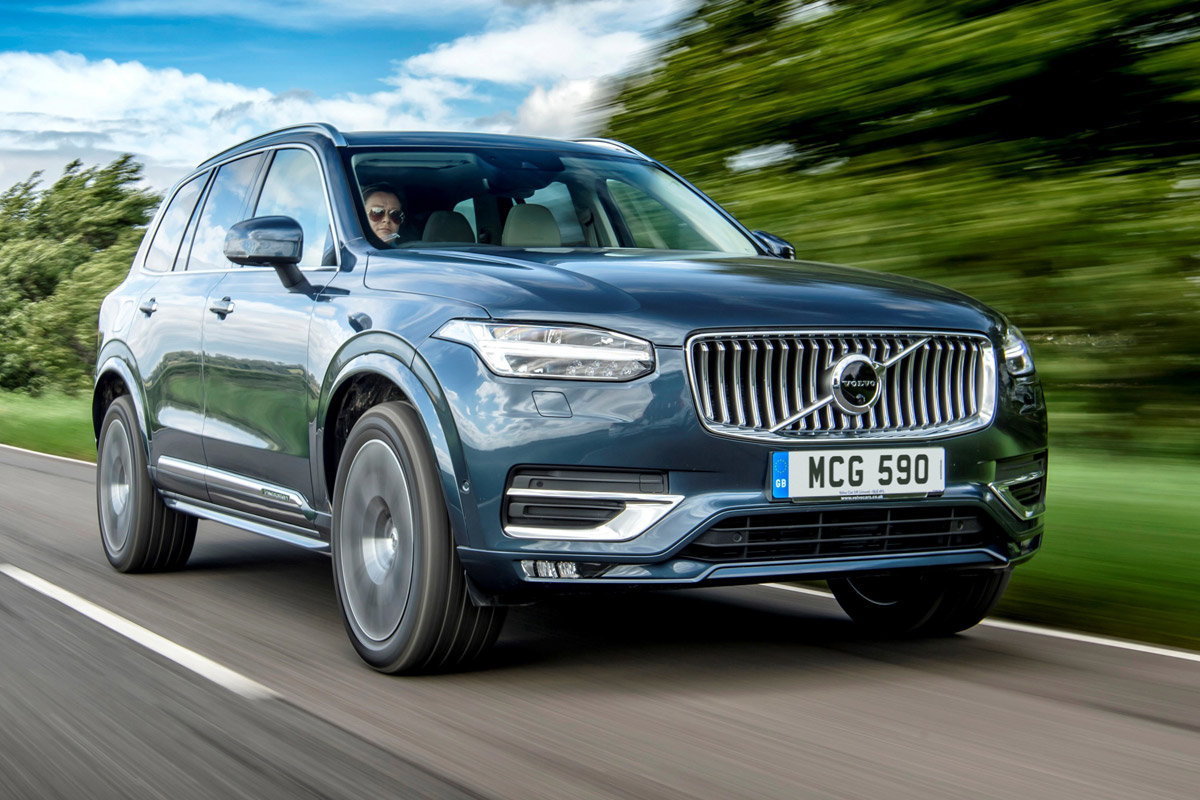
CarGurus expert rating: 4 out of 5 CarGurus user rating: 4.7 out of 5 Percentage of good/great deals available on CarGurus: 25.4% Overall CarGurus rating: 4.2 out of 5
| Pros | Cons |
|---|---|
| Tastefully designed interior | Slightly noisy engines |
| Hugely comfortable over long distances | Infotainment system not the best |
| Practical, spacious and safe | Audi, Mercedes or BMW rivals feel better built |
The second-generation Volvo XC90 is a brilliantly practical choice, underlining its status as a desirable and capable large SUV. Its cabin is a highlight, offering comfort and flexibility that families will appreciate. The three individual seats in the middle row slide independently, and the rearmost row offers enough space for average-sized adults, which is a rare feat in this class. With all rear seats folded down, the XC90 boasts a massive 1,950 litres of boot space. Safety is another of the XC90's strong suits, having earned a five-star Euro NCAP rating with exceptional scores for occupant protection.
The interior is plush and finely finished, making it a superb vehicle for long-distance travel. While it may not be as dynamically engaging as a BMW X5, it handles securely and avoids body roll. Engine choices include the efficient B5 mild hybrid petrol and the powerful T8 plug-in hybrid, all paired with a smooth eight-speed automatic gearbox and all-wheel drive.
The CarGurus Verdict: "The XC90 has always been a good option for those after a comfortable, relaxing and practical SUV, and the second generation continues that trend. It’s a far more modern and capable offering, while its elegant interior and restrained exterior styling may help tempt buyers away from the usual German options." - Lewis Kingston, contributor
Read our full Volvo XC90 review
4. 2025 Skoda Kodiaq

CarGurus expert rating: 4 out of 5 CarGurus user rating: 4.6 out of 5 Percentage of good/great deals available on CarGurus: 23.8% Overall CarGurus rating: 4.2 out of 5
| Pros | Cons |
|---|---|
| Exceptional interior space and practicality | Interior quality feels less premium than the previous model |
| Available in petrol, diesel, and plug-in hybrid configurations | Ride comfort is compromised at low speeds, especially on larger wheels |
| Competitive pricing for a seven-seater SUV | Plug-in hybrid not available with seven seats |
The second-generation Skoda Kodiaq builds on the success of its predecessor, cementing its place as a top contender for families needing space and versatility. As a seven-seater, its practicality is a major highlight. With the third row in use, you get 340 litres of boot space, which is comparable to a small hatchback. Fold those rearmost seats down, and the luggage capacity expands to a massive 910 litres. Passengers in the second row are treated to generous legroom and headroom, with seats that slide and recline for added comfort. While the third row is best suited for children, access is straightforward, making it a flexible option for larger families.
All 2025 Kodiaqs come well-equipped with a 13.0-inch infotainment screen and clever physical 'Smart Dials' for controlling features like the standard three-zone climate control. The Kodiaq offers a sensible range of engines, though it's important to note the new plug-in hybrid is only available as a five-seater. For seven-seat models, the 148bhp 1.5-litre mild-hybrid petrol engine is a solid choice for general family use. For those who frequently cover long distances or need to tow, the 2.0-litre diesel is ideal, available with either 148bhp and front-wheel drive or 190bhp with all-wheel drive. For the most comfortable ride, we'd suggest avoiding models with the the larger 19-inch wheels.
The CarGurus Verdict: "The new model of Skoda Kodiaq remains a highly practical, spacious, and well-equipped large family SUV... it excels in delivering comfort, value, and versatility." - Ivan Aistrop, senior editor
Read our full Skoda Kodiaq review
5. 2025 Volkswagen ID Buzz
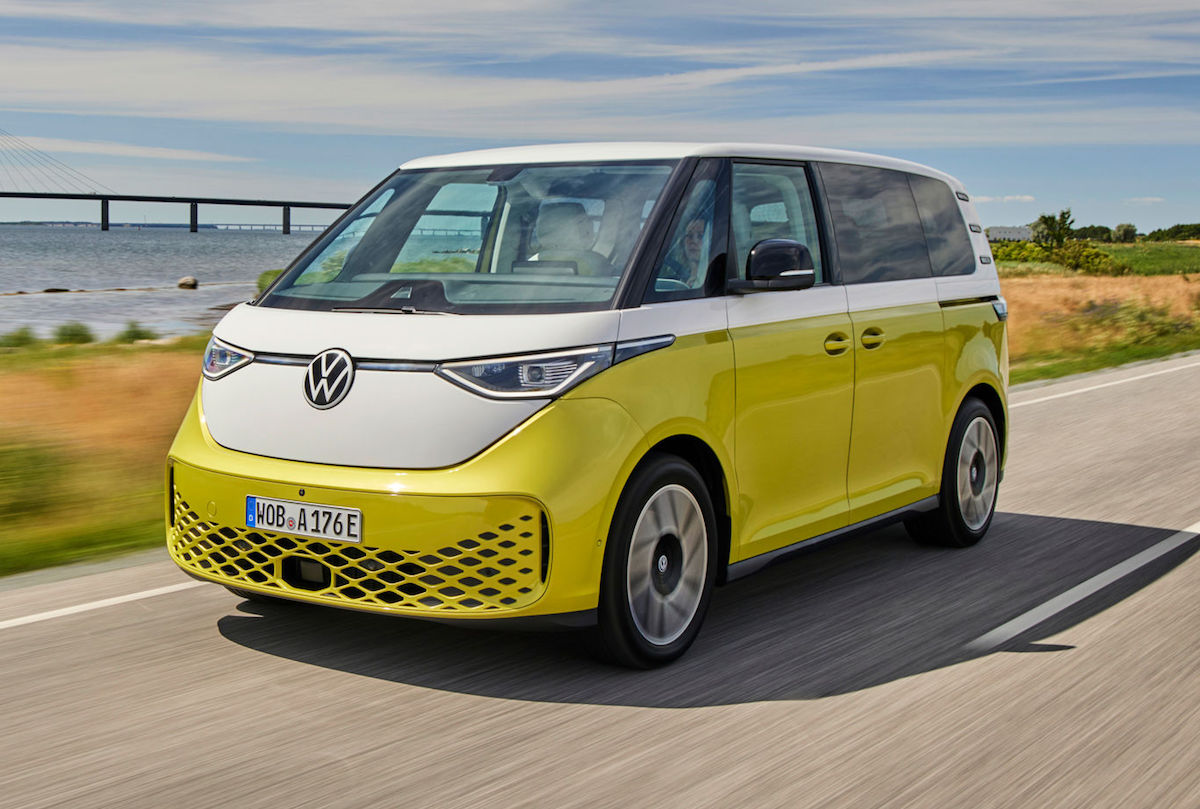
CarGurus expert rating: 4 out of 5 CarGurus user rating: 5.0 out of 5 Percentage of good/great deals available on CarGurus: 26.1% Overall CarGurus rating: 4.2 out of 5
| Pros | Cons |
|---|---|
| Fantastic styling | Hugely expensive |
| Good to drive | Charging cables cost extra |
| Beautifully finished interior | You’ll have to wait for the campervan version |
While the standard five-seat ID Buzz is already impressively spacious, it's the long-wheelbase seven-seat version that makes it a true contender for families seeking maximum versatility. Even in the five-seat model, boot space is a van-like 1,121 litres, and the cabin benefits from a flat floor and sliding doors on both sides, which makes access in tight parking spaces a breeze. The seven-seat model brings even more flexibility for larger families, with a third row of seats and a boot that expands to a massive 2,496 litres.
The ID Buzz is a delightfully comfortable and serene car to drive, soaking up most bumps with ease and remaining impressively quiet, even for by EV standards. Its 282bhp electric motor provides plenty of poke, taking 7.6 seconds to get from 0-62mph, but if that's not enough, the flagship GTX model offers a more powerful 335bhp motor for better performance. Inside, the retro-modern cabin is a highlight, feeling both cheerful and premium, though the reliance on touch-sensitive controls for volume and climate can be frustrating. While it's an expensive purchase, the ID Buzz is cheaper to fuel than petrol or diesel alternatives and its blend of style, practicality, and tech is unmatched by almost anything else on the road.
The CarGurus Verdict: "The Volkswagen ID Buzz is a brilliant EV, and an even better lifestyle van or MPV. It could be improved with more reasonable option prices, and more logical controls." - Vicky Parrott, contributing editor
Read our full Volkswagen ID Buzz review
6. 2025 Hyundai Santa Fe
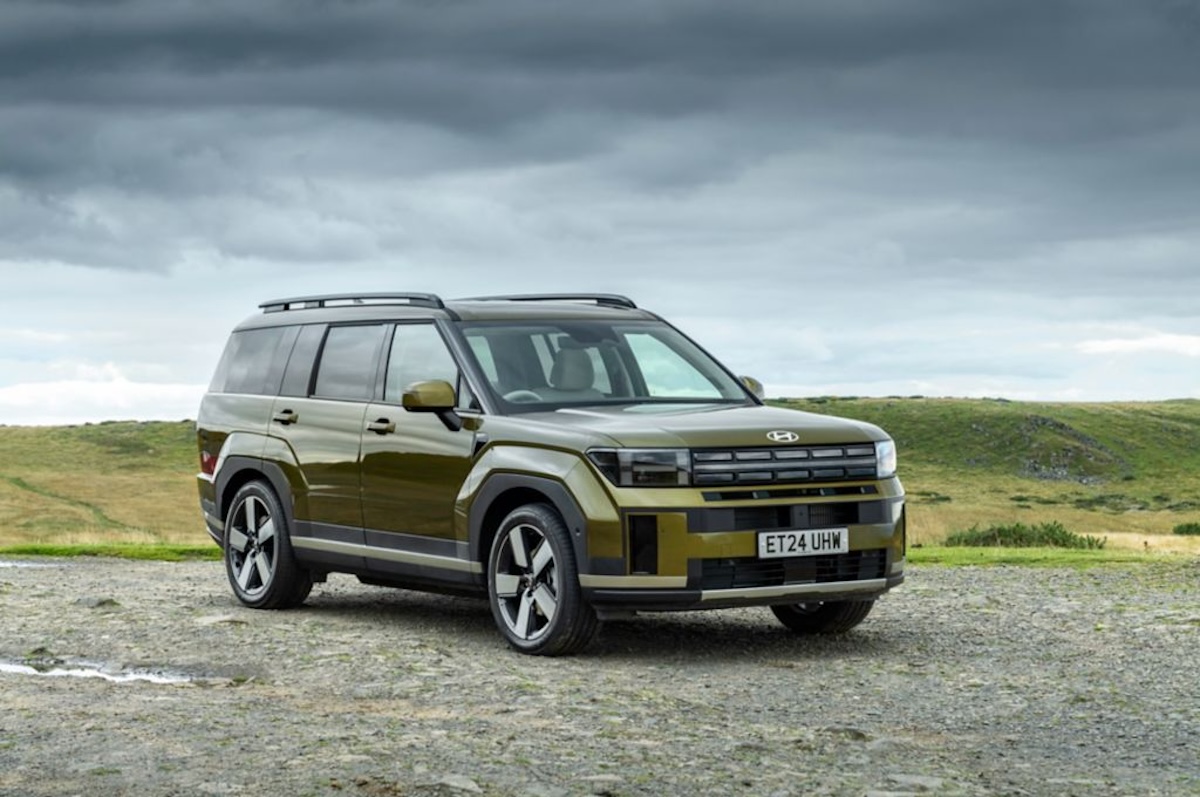
CarGurus expert rating: 4 out of 5 CarGurus user rating: 4.5 out of 5 Percentage of good/great deals available on CarGurus: 32.0% Overall CarGurus rating: 4.1 out of 5
| Pros | Cons |
|---|---|
| Huge space and versatility | Disappointingly low towing limit |
| Pleasantly trimmed interior | Cabin storage could be cleverer |
| Lots of standard equipment | Limited electric range on PHEV |
Now in its fifth generation, the Hyundai Santa Fe has transformed into a more upmarket, spacious, and tech-filled seven-seat SUV. Its bold, rugged styling gives it a distinctive presence, while the interior delivers a near-premium feel with high-quality materials and a practical, family-focused layout. There's ample room for tall adults in the sliding and reclining middle row, and even the third row is usable for adults on shorter trips. Family-friendly touches include Isofix points on the outer second- and third-row seats, and with the rearmost seats folded, you get a generous 621 litres of boot space in the plug-in hybrid (PHEV) version (628 litres in the hybrid).
Speaking of which, the Santa Fe offers a choice of a full hybrid or a plug-in hybrid powertrain, both using a 1.6-litre turbocharged petrol engine. The driving experience is refined and comfortable, with smooth power delivery and a cushy ride thanks to standard self-levelling suspension. All models come well-equipped, featuring a large 12.3-inch touchscreen with wireless Apple CarPlay and Android Auto. However, a drawback for some will be the surprisingly low towing capacity, which is a step back for a model that was once a favourite among owners of caravans and trailers.
The CarGurus Verdict: "We love the Hyundai Santa Fe, and we were very tempted to give it five stars. The only things that stopped us were the towing limit, and the fact that we’d like a longer real-world electric range for the PHEV." - Vicky Parrott, contributing editor
Read our full Hyundai Santa Fe review
7. 2025 Peugeot 5008

CarGurus expert rating: 4 out of 5 CarGurus user rating: 5.0 out of 5 Percentage of good/great deals available on CarGurus: 35.9% Overall CarGurus rating: 4.0 out of 5
| Pros | Cons |
|---|---|
| Stunning interior | Entry-level petrol engine isn’t great |
| Spacious and practical | Neither is the ride-and-handling balance |
| Good standard equipment | Rubbish warranty offering |
The latest, third-generation Peugeot 5008 builds on its predecessor's reputation for practicality with an even more flamboyant style and an exceptionally futuristic interior. For a large seven-seater, practicality is excellent; the sliding middle row of seats allows passengers to adjust legroom, and the third row is even usable for adults on short trips. With all seats in use, boot space is a respectable 348 litres, expanding to an ample 916 litres in five-seat mode.
That cabin is a highlight, dominated by a vast 21.0-inch curved display that combines the driver’s instruments and central touchscreen, which includes wireless Apple CarPlay and Android Auto as standard. A wide range of powertrains includes mild hybrid, plug-in hybrid, and two fully electric options, although the entry-level 134bhp 1.2-litre mild hybrid can feel sluggish and overwhelmed by the car's size. The plug-in hybrid offers up to 55 miles of electric-only driving, but the all-electric e-5008 models are particularly compelling. The standard-range version offers up to 310 miles, while the long-range model boasts an impressive 414 miles on a single charge.
The CarGurus Verdict: "Importantly for a seven-seater SUV, practicality is excellent, with generous room for passengers and luggage, and a clever and versatile seating system. The interior is gorgeous in terms of its design and quality, the cabin is generously equipped as standard, and even the infotainment system is pretty easy to use by modern standards." - Ivan Aistrop, senior editor
Read our full Peugeot 5008 review
8. 2025 Kia EV9
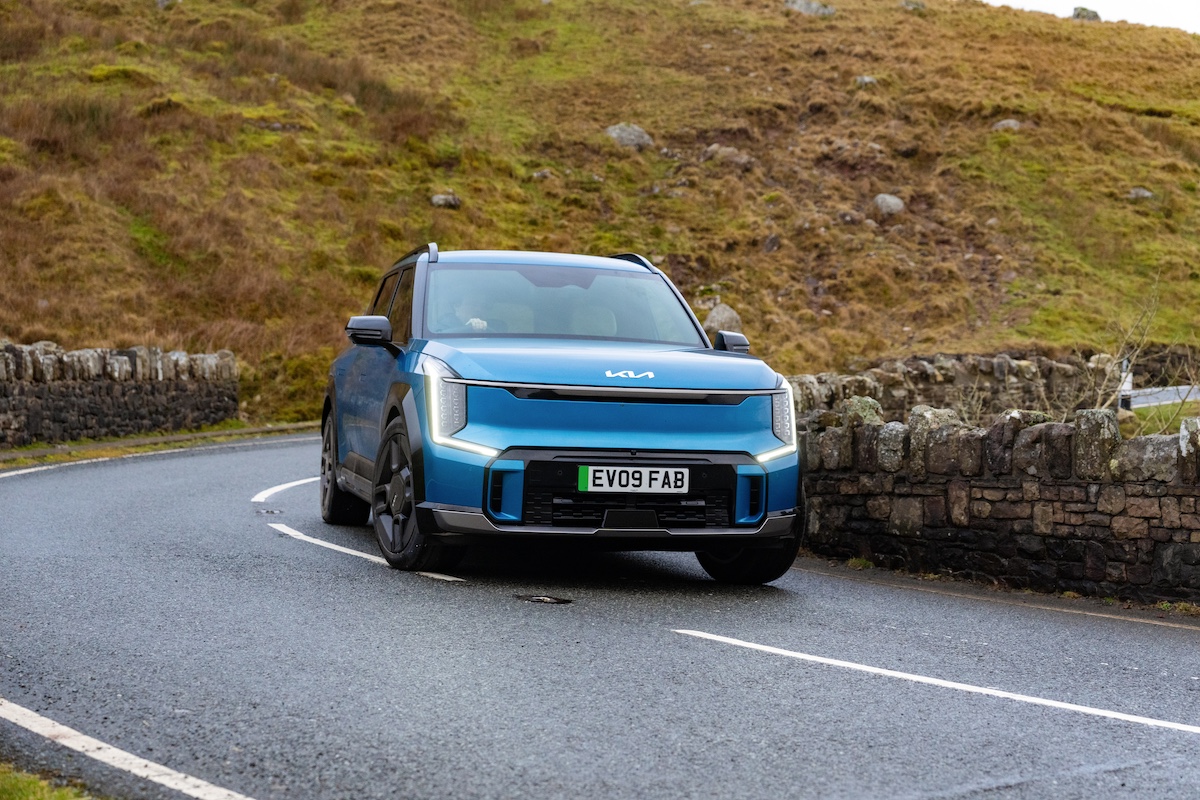
CarGurus expert rating: 4 out of 5 Percentage of good/great deals available on CarGurus: 34.1% Overall CarGurus rating: 3.8 out of 5
| Pros | Cons |
|---|---|
| Imposing looks | Some slightly disappointing cabin materials |
| Hugely practical seven-seat cabin | Dynamically very average |
| Even entry-level car is stuffed with tech | Rear visibility isn’t great |
As Kia’s all-electric flagship, the EV9 is a huge and luxurious seven-seat SUV aimed squarely at premium rivals. It’s a technological powerhouse, packed with an impressive level of standard equipment, a slick infotainment system, and a full suite of driver aids, even on the entry-level Air model. Practicality is immense, with a spacious cabin that offers plenty of room for adults in all three rows and a useful 333 litres of boot space even with every seat in place. Fold the third row down, and a vast loadbay opens up, making it perfect for any family task.
All versions of the EV9 feature a large 99.8kWh battery, giving the 200bhp rear-wheel-drive model an official range of 349 miles. Higher-spec all-wheel-drive models boast 378bhp and can accelerate from 0-62mph in a startling 5.3 seconds, with an official range of 313 miles. Thanks to its 800-volt architecture, the EV9 supports ultra-fast charging, allowing a 10-80% top-up in just 24 minutes.
The CarGurus Verdict: "The Kia EV9 is a hugely impressive car. It’s a technological tour-de-force, it’s also incredibly practical, with a roomy cabin and a big boot, and it boasts a good range with super-fast charging. While it’s not cheap, it still feels like decent value for what you get." - Chris Knapman, editorial director
9. 2025 Mercedes-Benz GLB-Class
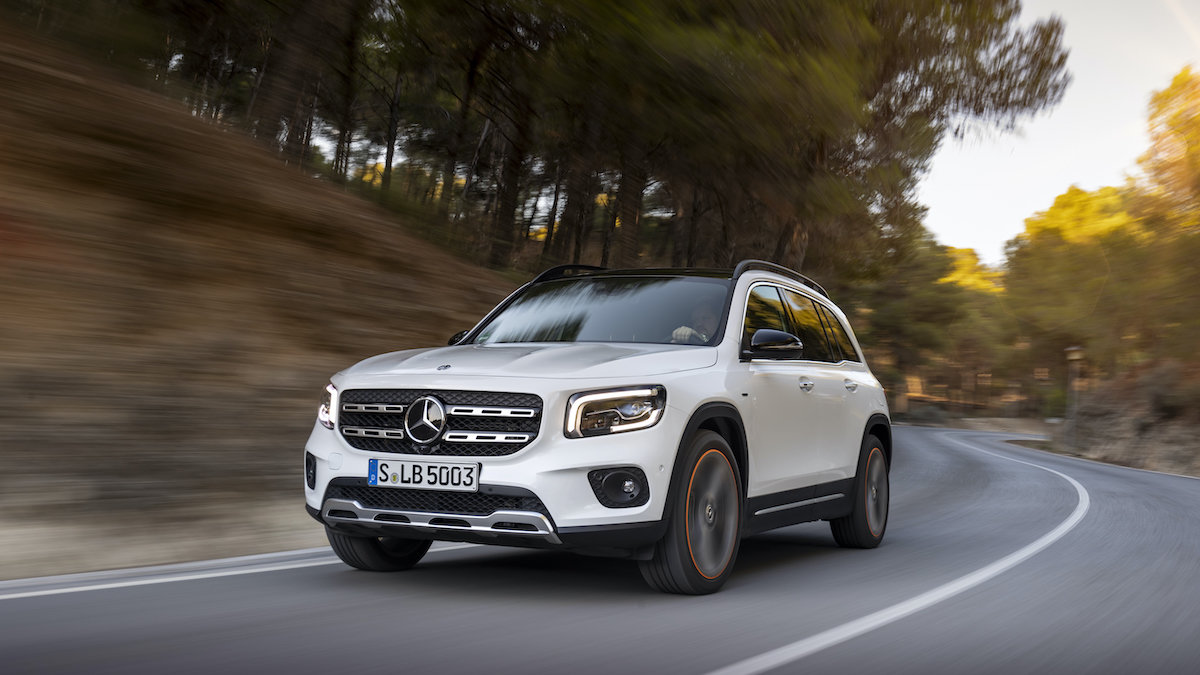
CarGurus expert rating: 4 out of 5 CarGurus user rating: 3.8 out of 5 Percentage of good/great deals available on CarGurus: 11.5% Overall CarGurus rating: 3.7 out of 5
| Pros | Cons |
|---|---|
| Impressive practicality and space | Panoramic sunroof reduces headroom |
| Seven seats when most rivals have five | Not as capable off road as a Land Rover Discovery Sport |
| Wow-factor of MBUX infotainment system | The AMG model is a bit OTT |
Mercedes slotted the GLB into its extensive SUV line-up to fill the gap between the GLA and GLC, but in doing so, created something quite unique in its class. While most rivals focus on swooping, coupe-like rooflines, the GLB adopts a more traditional, boxy shape that maximises function and interior space. This practical approach allows it to offer seven seats, a rarity for a compact SUV. With the third row folded, the boot offers a generous 570 litres of space. When all seven seats are in use the boot shrinks considerably, but the flexibility it offers is a key advantage over five-seat rivals.
Inside, the acclaimed MBUX infotainment system impresses with its twin digital screens that handle everything from navigation to media, all controllable via the touchscreen, a central touchpad, or steering-wheel controls. For running costs, the GLB 200d diesel is the most frugal choice, with an official fuel consumption figure of up to 50.4mpg. For those wanting to combine seven-seat practicality with serious performance, the Mercedes-AMG GLB 35 provides a potent 302bhp from its 2.0-litre turbocharged petrol engine.
The CarGurus Verdict: "Seven seats is a rare, and useful, commodity in SUVs of this size, and the promise of plentiful technology, a fine-looking cabin and great safety means it’s an appealing choice for family buyers." - Kyle Fortune, contributor
Read our full Mercedes-Benz GLB-Class review
10. 2025 Dacia Jogger
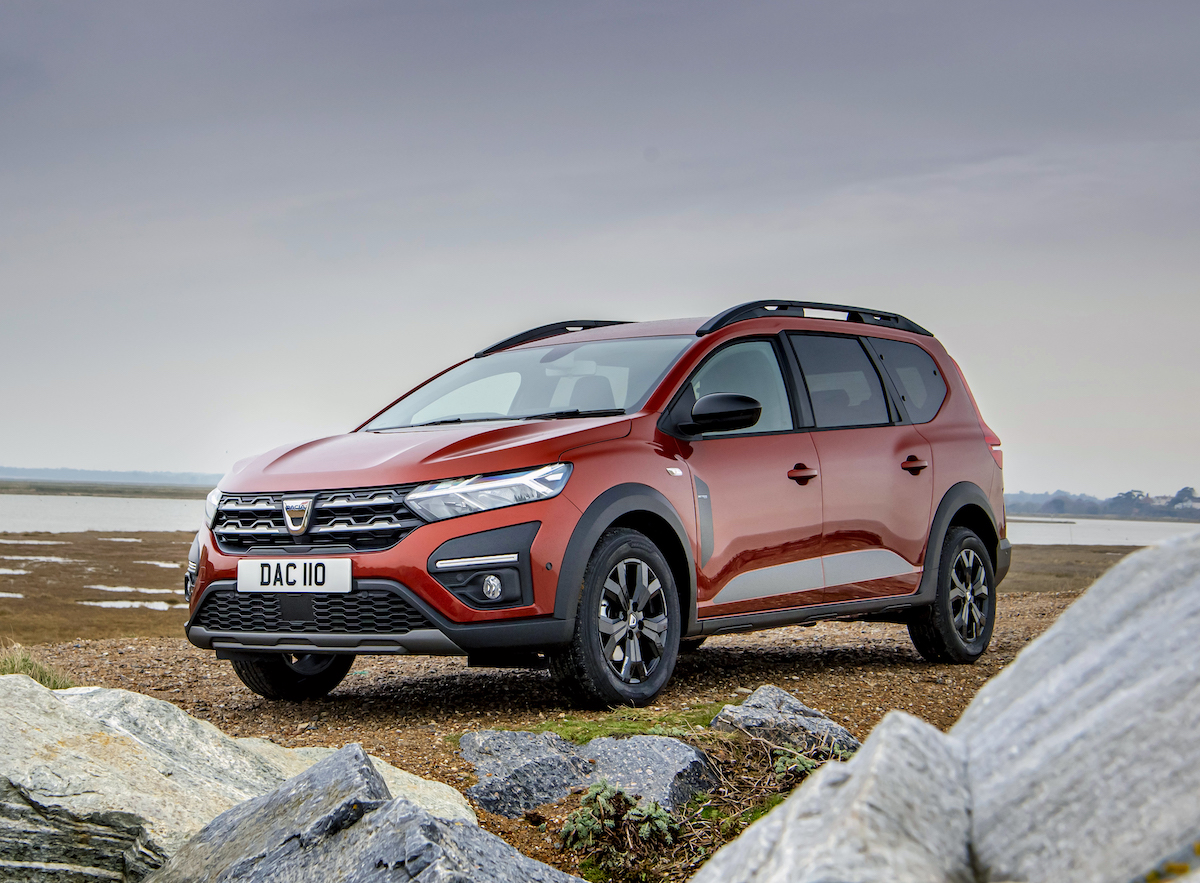
CarGurus expert rating: 3 out of 5 Percentage of good/great deals available on CarGurus: 39.6% Overall CarGurus rating: 3.6 out of 5
| Pros | Cons |
|---|---|
| Outstanding value | Seats lack support |
| Willing engine | Poor safety rating |
| Seven seats as standard | Lots of engine and tyre noise |
The Dacia Jogger is a true champion of value, offering seven-seater practicality for the price of a supermini. Yes, really. Based on the same underpinnings as the Sandero, Dacia has stretched the platform to create a remarkably spacious and versatile family car. All models come with seven seats, and while the 212-litre boot with all seats in place is modest, you can remove the lightweight 10kg rear seats entirely to create a van-like load bay. Passenger space is a real highlight, with even the third row offering enough head and legroom for average-sized adults.
Power comes from a 1.0-litre turbocharged petrol engine that produces 109bhp or a full hybrid with 140bhp. While the former might not sound like much for a seven-seater, the Jogger's low 1,200kg weight means performance is still perfectly adequate. The trade-off for the low price is a lack of refinement; Dacia has saved on sound deadening, so engine, wind, and tyre noise are noticeable. However, this is balanced by excellent running costs, with the efficient engine capable of returning between 45-50mpg in real-world driving. For families on a budget who need maximum space and practicality, the Jogger's compromises are easy to forgive.
The CarGurus Verdict: "Given its incredibly low price, the Dacia Jogger would find an audience even if it wasn’t very good. The fact it actually performs well in terms of practicality, engine performance, equipment and running costs make it recommendable to families who previously thought a used seven-seater was the only option." - Chris Knapman, editorial director
Read our full Dacia Jogger review
Frequently Asked Questions
Which 7-seater offers the best value for money?
The Dacia Jogger is the clear champion for value, providing seven seats and remarkable practicality for the price of a much smaller supermini. It's an ideal choice for budget-conscious families who need maximum space without a high purchase price.
What is the best electric 7-seater?
The Kia EV9 stands out as a top electric 7-seater, offering a great official range of up to 349 miles, ultra-fast charging capability, and a hugely practical and tech-filled cabin. For those seeking even more range, the all-electric Peugeot e-5008 is another compelling option, with the long-range model boasting an impressive official figure of up to 414 miles.
Which 7-seater is best for towing?
For towing, a powerful diesel engine is often the best choice. The 2.2-litre diesel version of the Kia Sorento is a standout, with a braked trailer capacity of 2,500kg. It's worth noting that many hybrid and plug-in hybrid models, such as the Hyundai Santa Fe, have significantly lower towing limits, so it's crucial to check the specifications if you plan to tow a caravan or large trailer.
I need maximum boot space. Which car should I look at?
If sheer volume is your priority, van-based models like the Citroen Berlingo XL are hard to beat, offering a cavernous load area. If you have a (much) bigger budget, the long-wheelbase Volkswagen ID Buzz offers a massive 2,496 litres of space with the third row folded. Or if you simply must have an SUV, the Volvo XC90 is exceptionally spacious, providing up to 1,950 litres of capacity.
What Makes CarGurus Best Cars Guides Different?
Most car buying websites publish lists of the best cars across a variety of categories, with recommendations generally driven by editorial expertise. Here's what makes our best cars guides different: we combine the insights and verdicts of our team of car-testing experts with other factors that we know matter to buyers - real owner experiences and current market value.
To that end, our expert reviewers come from some of the UK's most trusted automotive publications including What Car?, The Telegraph, Auto Trader, Electrifying.com, and Carbuyer. They put each car through real-world testing, and create detailed reviews noting performance in a range of categories, from practicality and driving manners, to running costs and reliability.
But we don't stop there when it comes to creating our best cars guides; we also analyse hundreds of thousands of used car listings on CarGurus UK to track which models consistently offer the highest percentage of best deals relative to how many are listed for sale. Then we factor in reviews from owners - people who actually live with these cars every day. Our best cars algorithm then creates a final Overall CarGurus score that combines expert ratings, user reviews, and the percentage of listings on CarGurus UK rated as good or great deals. This three-way approach reveals not just which cars excel on paper, but which ones deliver long-term satisfaction and value.
The CarGurus UK market data in this guide was last updated in December 2025. Values were accurate at time of publication and should be used as a guide only.
